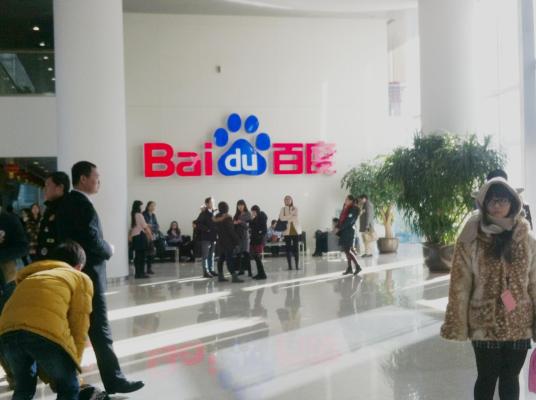Baidu is focusing aggressively on online-to-offline (O2O) sales, one of the hottest forms of e-commerce in China, but its near-term earnings growth is still under pressure. The company’s shares dropped about 9.5 percent in after-hours trading before recovering slightly as investors reacted to a disappointing Q3 2015 forecast.
The Chinese search giant said it expects next quarter’s revenue to be 18.17 billion RMB (about $2.93 billion) to 18.58 billion RMB, missing the 18.79 billion RMB analysts surveyed by Thomson Reuters had anticipated.
For Q2, Baidu reported profit of 3.66 billion yuan (about $590 million), or $1.64 per ADS. When items like share-based compensation are excluded, its earnings were $1.81 per ADS, compared to the $1.70 that Thomson Reuters analysts expected.
Revenue increased 38 percent to 16.58 billion yuan (about $2.67 billion). This matched Baidu’s own forecast for 16.37 billion yuan to 16.75 billion yuan, as well as analysts’ forecasts for 16.57 billion yuan.
Baidu spent heavily last quarter to build its O2O and streaming video businesses. Its selling, general, and administrative expenses rose 81 percent to 2.713 billion RMB ($437.5 million), thanks to increased promotional spending for O2O. Its gross merchandise volume (GMV) for O2O services, which include food delivery and ticket ordering, was 40.5 billion ($6.5 billion), a jump of 109 percent year-over-year. The company disclosed that O2O-related expenses reduced operating margins by 25.3 percentage points in Q2, while iQiyi, its video platform, reduced the same figure by 5.1 percentage points.
During Baidu’s earnings call, chief financial officer Jennifer Li said that penetration of O2O services is still in the “low single digits,” but the company expects rapid growth as people start using its search products to find services. The fastest-growing verticals include food and grocery delivery, transportation, and travel and movie tickets.
“Core search continued to grow and there is a lot of room for growth,” said Li. “Traditionally search connects people with information, but in the mobile age, search can function as a tool to connect people with services. The O2O services we operate will be a very valuable asset.” Monthly active users for its mobile search products rose 24 percent to 629 million in June, while mobile map users reached 304 million that month, a 48 percent year-over-year increase.
Li, however, added that while revenue from Baidu’s core search products “continues to be very solid,” revenue from O2O is still minimal at this stage. Other Chinese tech companies are eager to jump on the trend and Baidu’s business must compete with Meituan, Dianping and Alibaba affiliates, which means it has to invest aggressively in order to secure users. Li says Baidu expects to “eventually take a sizeable cut from O2O, but whether that is in three years or five years, it’s really hard to tell at this point.”
CEO Robin Li told analysts that Baidu has “many billions of dollars in cash” to help fuel its competitive strategy and services. This potentially includes a new stake in strategic partner Uber, which is integrated into Baidu Maps but still has to catch up with rivals like Didi Kuadi, which recently received $2 billion in new funding.
